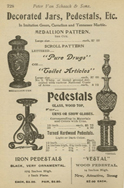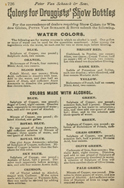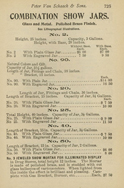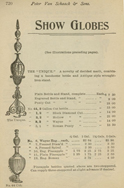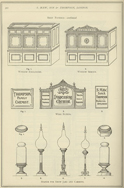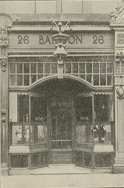
What is the Purpose of the Show Globe?
Originally, the show globe served a practical purpose, a sign of distinction between an apothecary's shop and other businesses. When they were first introduced on the streets of Britain, there were two major obstacles for the shop owner to confront. First, the streets were often narrow, winding roads with little or no street lighting, and secondly, the general public was typically illiterate and required a simple picture or symbol rather than a name to recognize a business. Thus, the show globe tackled both issues by providing a striking, easily recognizable symbol for the public, and with the addition of reflective mirrors to illuminate them, a source of light to attract customers on the dimly lit streets to the brightly lit store.
As the show globes grew in popularity in several countries, they became a well-recognized symbol of not only a place to obtain pharmaceutical supplies or remedies but also of the pharmacy profession itself. In 1931, the American Pharmaceutical Association adopted a resolution to legally make the show globe a sign solely of pharmacists: "the displaying of the show globe filled with colored liquids… by establishments not under the direct supervision of legally qualified pharmacists is deceptive and should be prohibited by law or by regulation of Boards of Pharmacy". Many states, such as Pennsylvania, adopted this stance and prohibited the use of show globes, the "recognized symbol of pharmacy," by any other business.
In the twentieth century, with the evolution of pharmacy, these decorative symbols were replaced with advertisements and merchandise. In a 1931 edition of American Druggist, one author warned the pharmacy community that a symbol of the profession was becoming extinct and implored pharmacists to regain this symbol by proudly displaying show globes once again. He explained, "The show globe is of the deepest significance to us worshipers at the shrine of Aesculapius. It identifies us at once as practitioners of an ancient and honorable profession; it gives us a legal right to a symbol which may not be used by any other class of business, but a right which may be lost through lack of exercise." Following the publication of this article, the Owens Illinois Glass Company introduced a new style and began a renewed interested in show globes. They continued production until 1965, and again, show globes slowly disappeared from pharmacy windows.
